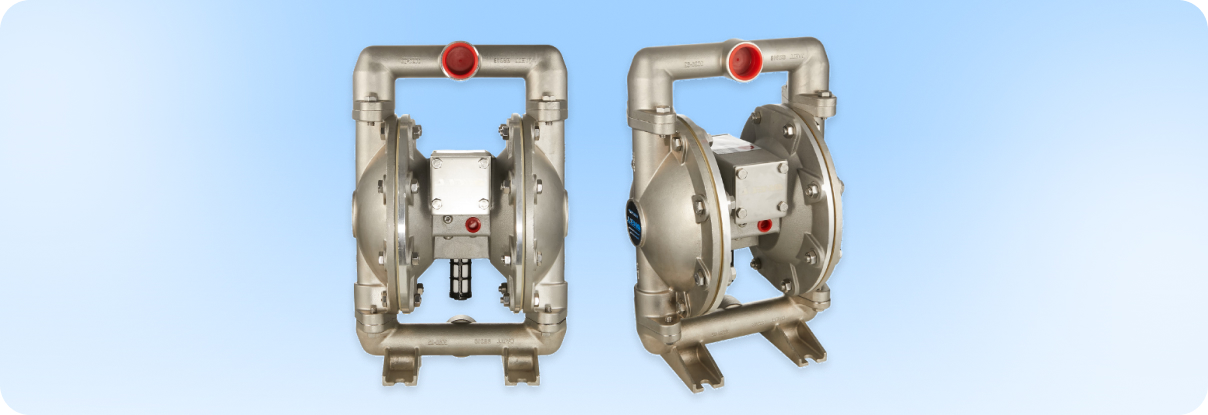
Mon - Fri: 9:00 - 19:00 / Closed on Weekends

AUS: +61 431 085 666
USA: +64 21 480 290


In every industrial operation, pumps are often seen as supporting components rather than central assets. They move fluids, drive process flow, and maintain pressure across countless applications. Yet the true influence of pump systems extends far beyond basic transfer functions. The right pumping solution can directly impact productivity, energy consumption, operating costs, and long-term profitability.
Across manufacturing, wastewater management, mining, and food production, pump performance affects the consistency and economics of daily operations. When chosen and implemented effectively, pumps do more than move material. They determine how efficiently an entire plant performs.
Ovell Pump has long understood this relationship. As a leading diaphragm pump manufacturer, the company focuses not only on design and durability but also on how pumping systems contribute to measurable business outcomes.
Pumps are the backbone of industrial movement, yet their influence often goes unnoticed until a problem arises. A failing pump can halt an entire production line, cause contamination, or result in costly downtime. While pump failure has obvious financial consequences, the everyday performance of pumps also carries hidden costs and opportunities.
The key areas where pumps affect operational value include:
These are not just technical parameters. They represent direct business outcomes that influence profitability, operational resilience, and corporate reputation.
Many procurement decisions in the industrial sector are still driven by initial purchase price. However, a lower upfront cost does not always equate to value. Pumps that are cheaper to buy often incur higher costs over their lifecycle due to energy inefficiency, frequent repairs, or downtime losses.
When evaluating pump investment, three major cost areas must be considered:
By evaluating pumps through total cost of ownership rather than initial expenditure, businesses gain a clearer understanding of where value truly lies. Ovell Pump’s products are designed to minimise lifecycle costs while maximising reliability and performance.
Every aspect of pump performance can influence a company’s bottom line. Smooth, consistent flow ensures predictable production cycles, while reliability reduces interruptions. Even small performance gains can produce measurable results across energy bills, yield quality, and process stability.
Key performance factors that translate into profit include:
In this sense, a high-quality pump is not just an expense but an asset that drives process reliability, output quality, and long-term profitability.
Selecting the right pump goes beyond matching specifications to flow requirements. It involves aligning equipment performance with operational priorities and sustainability goals.
Factors that elevate pump choice from an engineering task to a strategic decision include:
By considering these broader impacts, decision-makers can turn a simple procurement action into a long-term operational strategy.
The true value of a pump is not limited to its mechanical construction but includes the ecosystem of support, expertise, and engineering integration behind it.
Ovell Pump recognises that clients need more than a product. They require a reliable partner that understands fluid dynamics, material compatibility, and operational constraints.
Value-added elements include:
These factors form the foundation of long-term trust, helping clients reduce uncertainty and achieve consistent process performance.
Modern industries are increasingly integrating sustainability and efficiency into their corporate objectives. Pump performance directly supports these goals by reducing energy consumption, improving material yield, and supporting automation.
Pumps influence business objectives in several ways:
In this way, pumps serve as measurable components of an organisation’s sustainability and financial performance strategy.

Ovell Pump is a leading diaphragm pump manufacturer providing energy-efficient and reliable fluid handling solutions for industries across Australia and beyond. With more than a decade of production expertise, the company designs pumps that combine durability, low maintenance, and high performance.
Its product range includes air operated double diaphragm pumps, electric diaphragm pumps, diaphragm metering pumps, pneumatic powder pumps, and specialised booster and flap valve diaphragm pumps.
Each product reflects Ovell’s engineering philosophy of balancing precision with practicality. The company’s commitment to quality, technical support, and customer satisfaction ensures that every client receives a solution that adds measurable value to their operations.
The modern industrial landscape demands more than functionality. Every piece of equipment must contribute to efficiency, safety, and profitability. Pumps, often underestimated, are among the most influential assets in achieving those objectives.
By viewing pump performance as part of a broader strategy for operational excellence, businesses can reduce costs, improve reliability, and strengthen sustainability efforts.
Ovell Pump continues to help industries unlock this value through well-designed, efficient, and dependable pumping systems that deliver more than movement, they deliver measurable business impact.